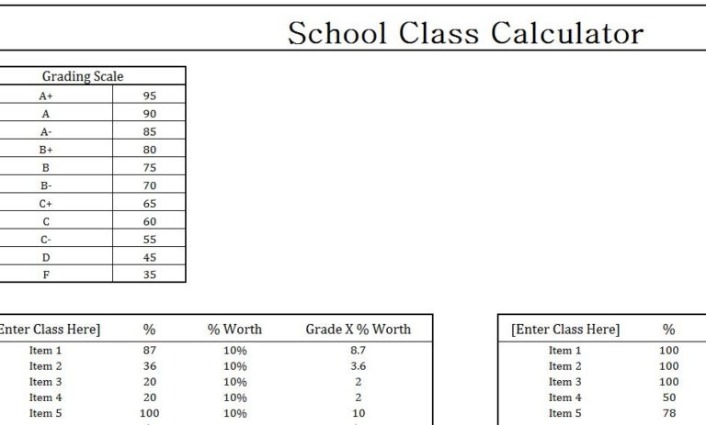Boulder’s Competitive Edge: Master the SAT and ACT with Real Practice and Expert Tutoring
Why Boulder Students Excel with Focused, Localized SAT and ACT Strategies
Families seeking SAT prep Boulder and ACT prep Boulder solutions benefit from a distinctive academic culture: rigorous coursework, outdoor-minded balance, and schools that encourage advanced STEM and humanities tracks. That environment creates motivated test-takers—but it also raises the bar. Excelling requires a plan tailored to the digital SAT’s adaptive format and the ACT’s speed-driven pacing, paired with time-efficient practice that mirrors the real exam experience.
The digital SAT now features two sections—Reading and Writing, and Math—each split into two adaptive modules. Performance in the first module influences difficulty in the second, so strategic accuracy early on is crucial. A data-forward plan should prioritize problem sets calibrated to the student’s current accuracy band, then increase complexity as mastery improves. For the ACT, the blueprint remains consistent: English grammar and rhetoric at high speed, linear Math emphasizing algebra and geometry foundations, Reading that rewards annotation and passage mapping, and Science that tests reasoning with charts and experiments rather than niche content knowledge.
In practice, high-impact prep means precision. Use official-style materials daily in short bursts, and schedule weekly full-lengths under realistic conditions. For vocabulary, emphasize context and tone over rote memorization. For reading, practice passage-level predictions and line-of-evidence reasoning. For math, build a formula “toolbelt” and drill mistake patterns until they disappear. Students aiming for National Merit or top-percentile composites should pivot early to advanced timing tactics—such as triage sequencing on ACT Reading and targeted “no-calculator” sprints on the SAT Math.
Finally, choose the exam that fits cognitive strengths. Strong mental math, adaptive resilience, and comfort with short, multi-skill reading tasks often favor the SAT. Rapid processors who thrive under tight clocks and straightforward question phrasing often shine on the ACT. A diagnostic week comparing both tests—and reviewing missed-question categories—clarifies the decision, saving months of effort and accelerating score gains.
From Real Practice to Real Scores: Using Released Tests, Analytics, and Smart Routines
Authentic materials are non-negotiable. The most efficient prep routines revolve around official exams and close clones, especially Real SATs pdf and Real ACTs pdf resources that reflect the true question style, distribution, and scoring curves. Start with a baseline test under proctored conditions: same timing, minimal interruptions, and strict bubbling or digital-input protocols. Then build an error log that tracks question type, root cause, and a “fix” plan. Over time, this becomes a personalized syllabus that targets the exact skills the test rewards.
For the digital SAT, prioritize module-by-module training. After each set, categorize misses into comprehension, content, or strategy. Reading and Writing errors often stem from misreading evidence lines or overlooking grammatical constraints like parallelism, concision, or modifier placement. Math misses frequently reflect incomplete algebraic setup or premature calculation. The remedy: write micro-checkpoints into your scratch work (units, variable isolation, domain checks) and annotate passage claims with a four-step routine: gist, function, evidence, and trap patterns. Because the SAT is adaptive, stabilizing early accuracy compounds your score potential in later modules.
On the ACT, pacing frameworks are critical. Build “split times” for each section and rehearse decision rules: when to skip immediately, when to mark and return, and when to guess strategically. For English, memorize the hierarchy—grammar first (subject-verb, pronouns, verb tense), then rhetoric (transitions, organization). For Math, set checkpoints at questions 20, 40, and 60. For Reading, practice “passage triage” by leading with your best genre (narrative, social science, humanities, natural science). For Science, treat each passage like a mini-experiment: define variables, track trends, and translate graphs before hunting answers.
Data-driven review converts effort into points. After each practice, recalc accuracy by category—command of evidence, vocabulary-in-context, systems of equations, functions, geometry, punctuation types, inference—so the next study block targets the highest-leverage weaknesses. Rotate in mixed sets to prevent overfitting to a single skill. As test day approaches, simulate fatigue by stacking sections and practicing recovery routines: a 30-second reset, controlled breathing, and quick reframing of the next section’s objective. The combination of authentic practice, disciplined analytics, and mental reset strategies consistently produces resilient, repeatable performance jumps.
Personalized Tutoring and Local Case Studies: Turning Strategy into Top-Tier Results
One-to-one guidance converts good plans into great outcomes. With tailored pacing models, curated drills, and a coach who adapts to each session’s performance, individualized support consistently compresses timelines and boosts confidence. Students who start with similar baselines often diverge because personalization addresses the precise sticking points—timing bottlenecks, careless errors, or concept gaps—that generic curricula cannot resolve. Targeted SAT tutoring and ACT tutoring focus on mastery first, speed second, and testing mindset always.
Consider a Boulder High junior who began at a 1190 SAT equivalent after strong grades but uneven test stamina. The plan integrated two weeks of foundation repair (algebraic manipulation, proportional reasoning, and sentence structure) followed by a month of adaptive, difficulty-tiered sets. The student logged every miss by category and noted the specific trap answered, such as extreme wording or out-of-scope claims. With weekly proctored practice and 20-minute daily micro-drills, scores climbed to the mid-1400s. The breakthrough came when early-module accuracy solidified, raising the difficulty in later modules and opening a higher scoring ceiling.
At Fairview, a senior targeting STEM programs faced an ACT plateau at 29–30. The solution was a pacing redesign: aggressive front-end skim on Reading with deeper dives on two favorite passages, Science “graph-first” decoding, and Math checkpoint splits that preserved eight minutes for the final 10 problems. Grammar became automatic through pattern recognition flash cycles (comma rules, verb tense, pronoun case). Within six weeks, the composite moved to a 33, with the largest gains in Reading and Science due to triage and visualization techniques rather than content memorization.
For families wanting guidance from the first diagnostic to the final score report, Private SAT tutoring aligns instruction to data and delivers measurable progress. Students who prefer one-on-one support for the ACT benefit similarly from Private ACT tutoring that targets section-specific constraints and leverages strengths. Whether scheduling around AP workloads, athletics, or research projects, tutors can set a sustainable cadence: two 60–90 minute sessions per week, daily 20-minute drills, and a full-length test every 10–14 days. The program becomes a compact, high-yield routine that fits Boulder’s busy calendars.
Locally, the most successful test-takers combine community resources—challenging coursework, peer accountability, and teacher feedback—with expert coaching and official practice. That blend, anchored by Real SATs pdf and Real ACTs pdf materials and refined by individualized instruction, consistently pushes scores into competitive ranges for selective colleges and merit aid. With disciplined execution and the right strategic framework, Boulder students turn strong academics into standout test performance and expanded college options.




Leave a Reply